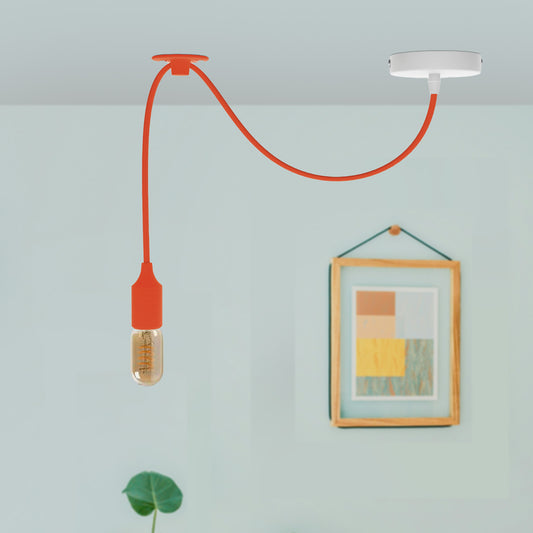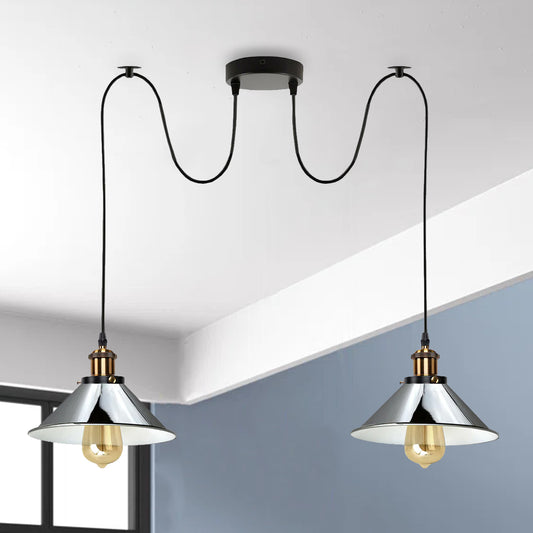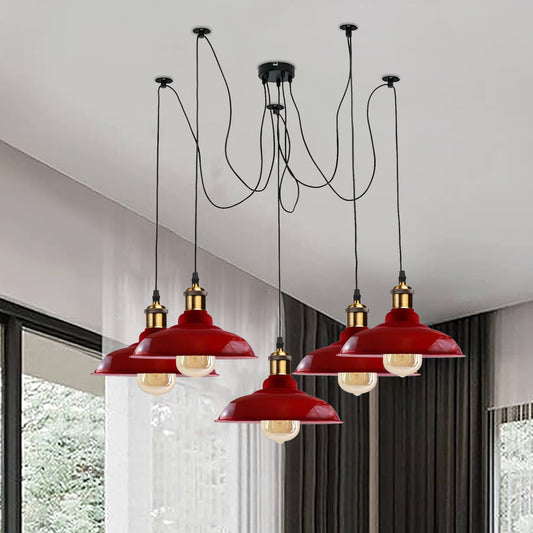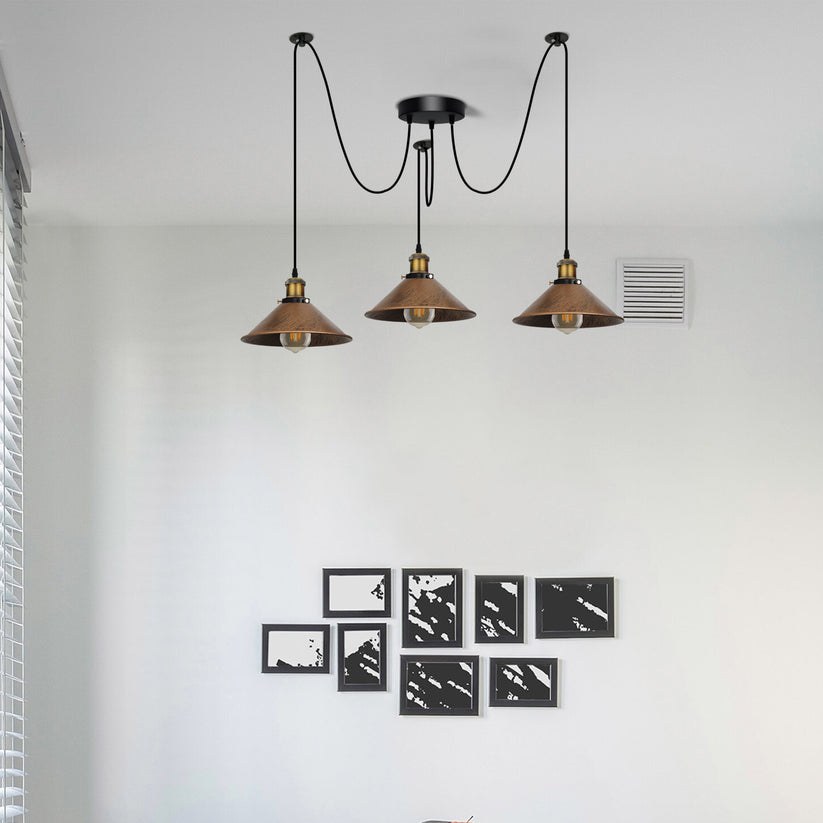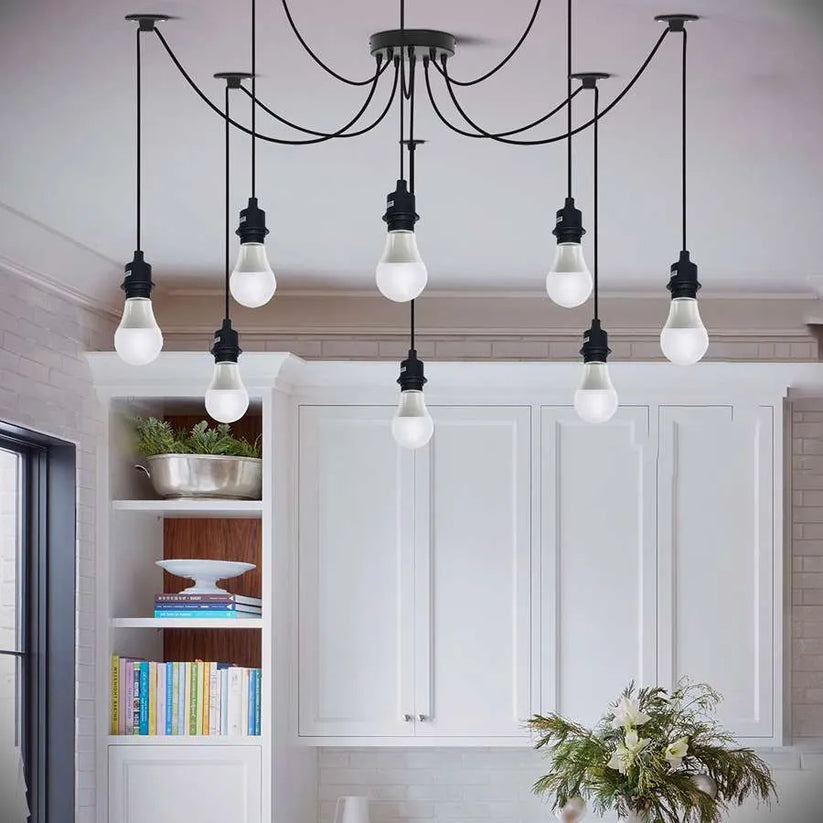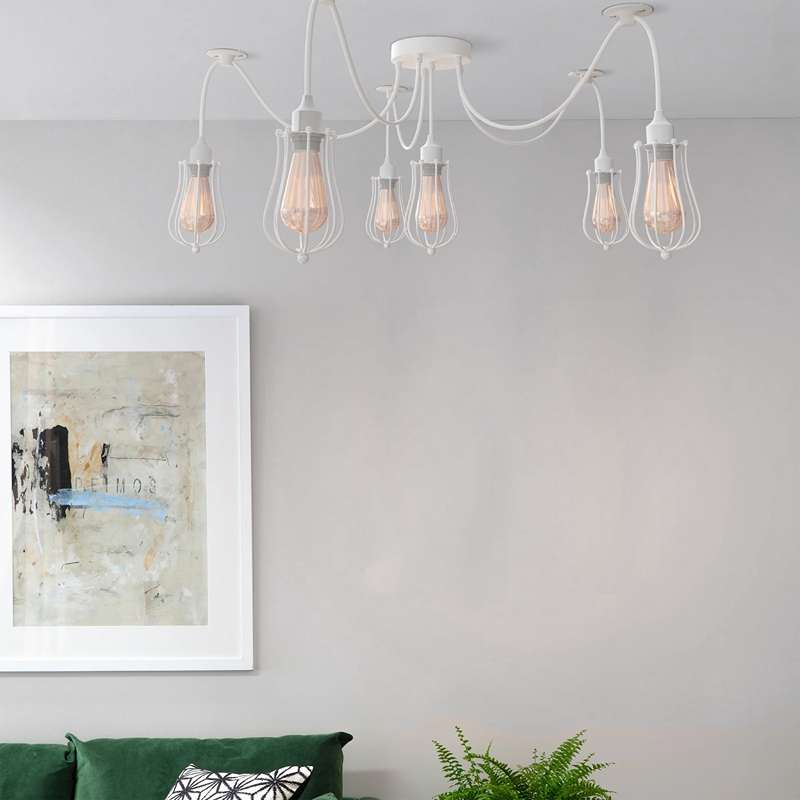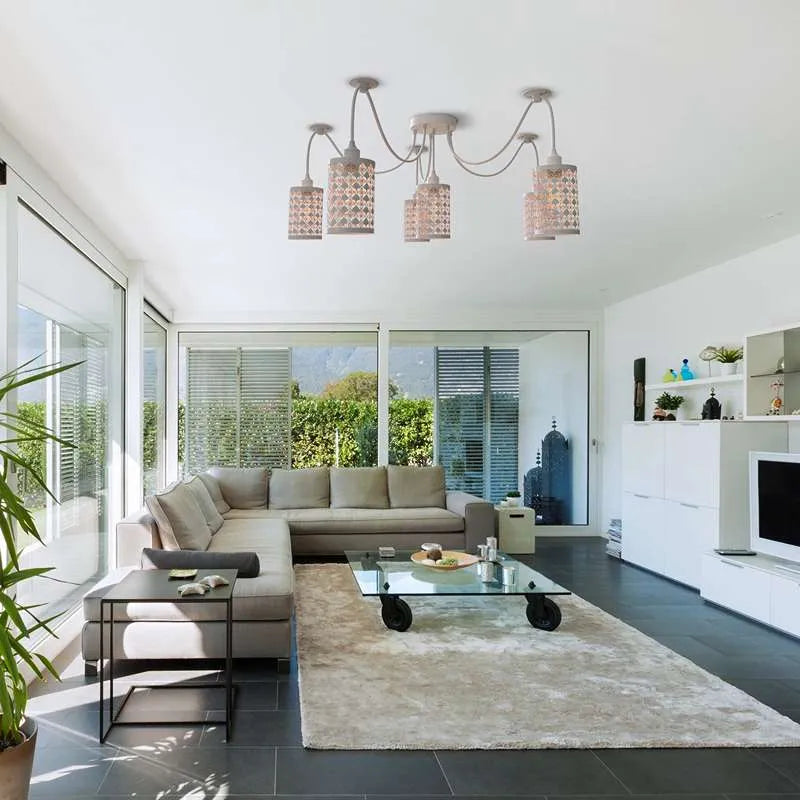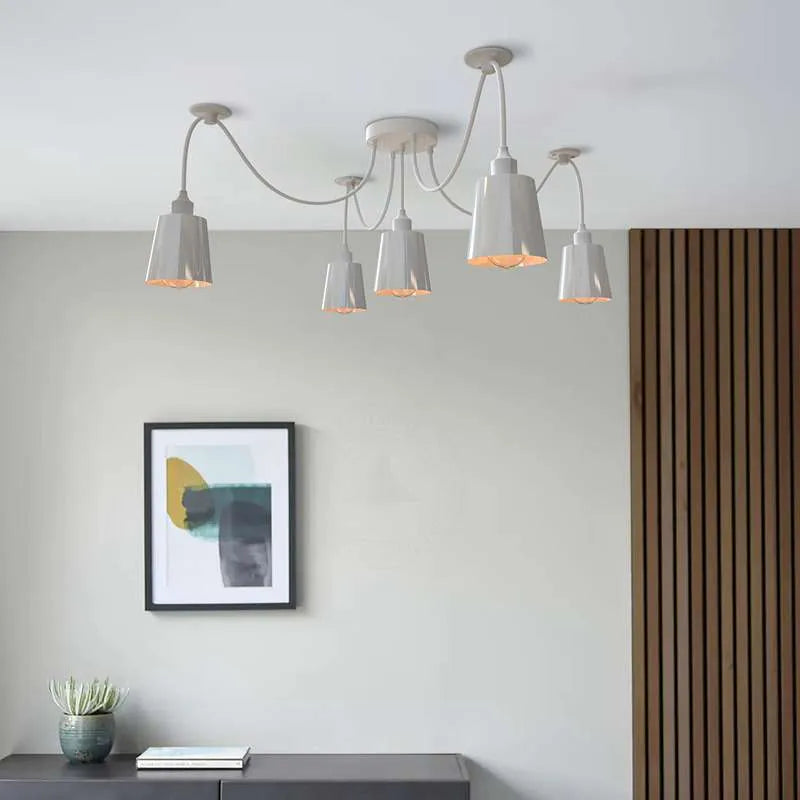Spider Light
- Featured
- Best selling
- Alphabetically, A-Z
- Alphabetically, Z-A
- Price, low to high
- Price, high to low
- Date, old to new
- Date, new to old
- Featured
- Best selling
- Alphabetically, A-Z
- Alphabetically, Z-A
- Price, low to high
- Price, high to low
- Date, old to new
- Date, new to old
Filter
CEILINGROSE TYPE
COLOUR
CEILINGROSE TYPE
COLOUR
Kitchen Pendant Light on Hook fixture~4740
2-way Retro Industrial ceiling cable E27 Hanging lamp pendant light~3403
5 Way Spider Ceiling Pendant Lamp Metal Curvy Shade~3399
5 light E27 Pendant adjustable cable with swag light~5126
Everything You Need to Know About Spider Lights

Spider lights are versatile lighting fixtures that have become a staple in photography studios and event spaces. Their adjustable design and powerful illumination make them ideal for creating the perfect lighting setup. Whether you're a photographer, filmmaker, or event planner, this guide will help you understand how to use spider lights effectively.
Key Points
- What Are Spider Lights? Multi-legged lighting fixtures designed for adjustable, directional lighting.
- Types: 2-head, 3-arm, 5-arm, 6-way, and 8-way spider lights.
- Uses: Photography, film, and event lighting.
- Pros and Cons of Spider Lights
- Key Features: Adjustable legs, brightness control, color accuracy, and portability.
1. Introduction to Spider Lights
What Are Spider Lights?
Spider lights are lighting fixtures with multiple adjustable arms, resembling a spider’s legs. They provide directional lighting and are highly versatile for various applications.
History and Evolution
Originally designed for film and photography, spider lights have evolved to include LED technology, RGB options, and lightweight designs. They are now widely used in events and creative projects.
Common Uses
- Photography: Studio portraits, product shoots, and outdoor photography.
- Film: Lighting for scenes and interviews.
- Events: Stage lighting, weddings, and parties.
- Brass, bronze, and ceramic materials are excellent choices.
Types of Pendant Lights
Spider lights come in various configurations to suit different needs:
| Type | Description |
|---|---|
| 2-Head | Compact and portable, ideal for small setups. |
| 3-Arm | Offers balanced lighting for medium-sized spaces. |
| 5-Arm | Provides extensive coverage, perfect for large events. |
| 6-Way | Highly adjustable, suitable for creative lighting setups. |
| 8-Way | Maximum coverage and flexibility, ideal for professional studios. |
Key Features To Look For:
When choosing spider lights, consider the following features:
- Wattage and Brightness: Higher wattage provides brighter light but consumes more power.
- Adjustable Legs: Flexible arms allow precise positioning.
- Light Temperature: Look for adjustable color temperatures (e.g., 3200K to 5600K).
- Durability: Ensure the build quality matches your usage needs.
How to Use Spider Lights
Setting Up for Photography
- Position the light at a 45-degree angle to the subject for soft, flattering light.
- Use diffusers to reduce harsh shadows.
Tips for Event Lighting
- Position multiple lights around the venue for even coverage.
- Use RGB spider lights for dynamic, colorful effects.
Creative Techniques
- Backlighting:Place the light behind the subject for a dramatic silhouette.
- Color Gels: Add gels to tungsten lights for creative effects.
Pros and Cons of Spider Lights
Advantages
- Highly adjustable and versatile.
- Available in various types and configurations.
- Portable options for on-the-go use.
Limitations
- Tungsten lights can overheat.
- High-quality models can be expensive.
Maintenance and Care
Cleaning and Storage
- Wipe down the lights with a soft, dry cloth after use.
- Store in a cool, dry place to prevent damage.
Troubleshooting
- Flickering Lights: Check the power source and connections.
- Overheating: Ensure proper ventilation and avoid prolonged use at maximum brightness.
Frequently Asked Questions
Question 01 : What is the best spider light for beginners?
A 3-arm spider light from ledsone is a great starting point.
Question 02: Can spider lights be used outdoors?
Yes, but ensure they are weather-resistant or use protective covers.
Question 03: How do I choose the right wattage?
For small setups, 100-200W is sufficient. For larger spaces, opt for 300W or higher.
Question 04: Are LED spider lights better than tungsten?
LED lights are more energy-efficient and produce less heat, making them ideal for most applications.
